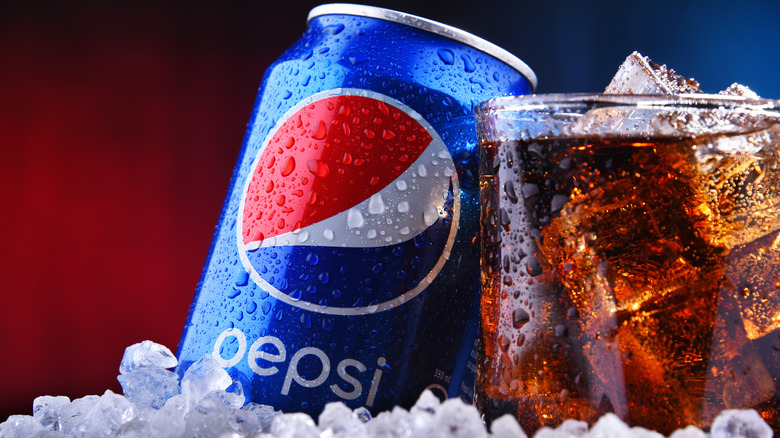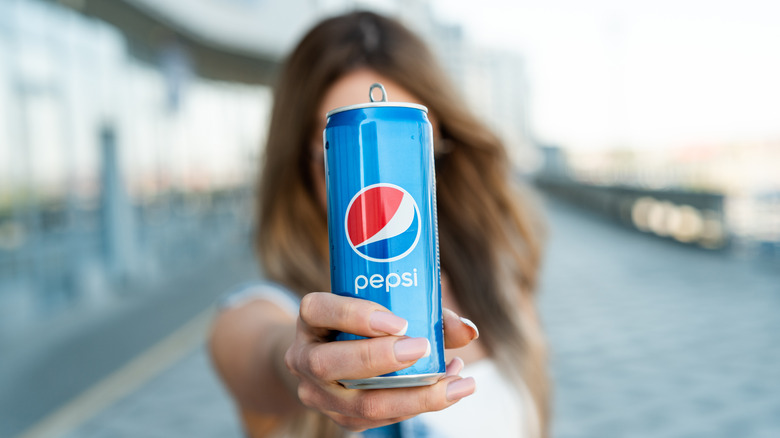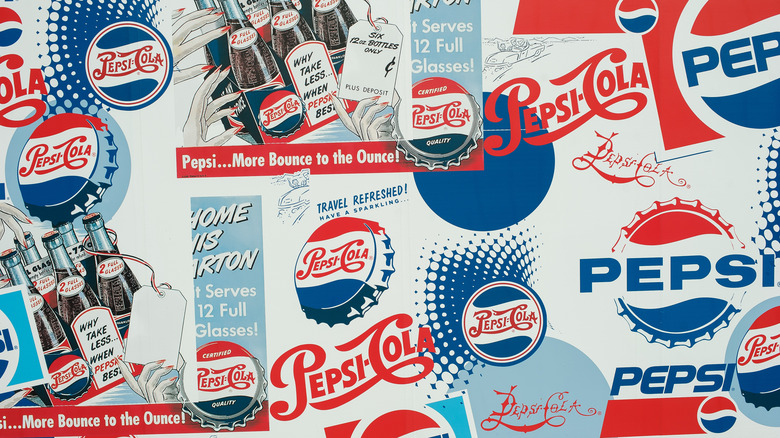Why Pepsi Was Originally Called 'Brad's Drink'
Behind every successful brand lies strategic marketing, and Pepsi is no exception. Most recently, Pepsi revealed a new logo in March 2023, and over the past few years, its cans have gotten seemingly smaller. But few people know that this beverage underwent its most radical change when it ditched its original name, "Brad's Drink," right at the end of the 19th century.
In the late 1800s, Caleb Bradham, a pharmacy graduate from the University of Maryland, opened Bradham's Pharmacy in New Bern, North Carolina. Like most drugstore owners at the time, Bradham attracted customers to his pharmacy through high-concept interior design, with his storefront featuring a jukebox and a selection of sodas for sale. Regulars quickly fell in love with his unique kola nut vanilla option, and in no time, Bradham began to sell it as "Brad's Drink" until renaming the drink to Pepsi-Cola a few years later, in 1902. He also took no time in selling this fizzy drink as a refreshment.
The name inspiration comes from the enzyme pepsin
Bradham trademarked "Pepsi-Cola" shortly after purchasing the name "Pep-Kola" from a nearby business rival. From there, he took inspiration from pepsin, a digestive agent naturally found in people's stomachs, and tweaked its name to "Pepsi-Cola," despite the fact that the company has never included the gastric chemical in its famous drink. In fact, early promotional material for the refreshment called it the "Pepsin drink" (per the ECU Digital Collections ).
The original Pepsi store claims that Bradham considered his concoction to be more than a soft drink — but rather, a drink that could directly improve digestion (via The Pepsi Store). Thus, Pepsi had its fair share of tall tales during its first advertisements. One of the most popular myths was that it could fix an upset stomach — which technically can be considered true, as a 2012 study by the Journal of Nutritional Science and Vitaminology indicates that carbonated water offers short-term relief for gastrointestinal symptoms and even fullness. Sure, Pepsi has quietly changed its formula in the past, but never to compete with actual medical treatments for the gastrointestinal system.
Brad's Drink and Pepsi changed further after World War I
Despite initial success, a series of bad business decisions left Pepsi struggling during World War I to the point where Bradham actually sold the company off. In 1917, the United States joined the Allies shortly after Germany attacked various American ships. During this time, the U.S. government rationed sugar, which made Pepsi production a nightmare. Shortly after, inflation skyrocketed the price of sugar, and it didn't take long for Bradham to sell his company after he invested so much in large quantities of the sweetener.
Pepsi eventually got sold off to the Craven Holding Corporation and survived many decades to become one of the biggest soft drinks on sale. Now, Statistica shows that PepsiCo's revenue has grown steadily in the billions since 2016, with the company making about $86 billion in 2022 alone. And with a brand as globally recognized as Pepsi, it's hard to wrap your mind around it ever struggling on the market.



